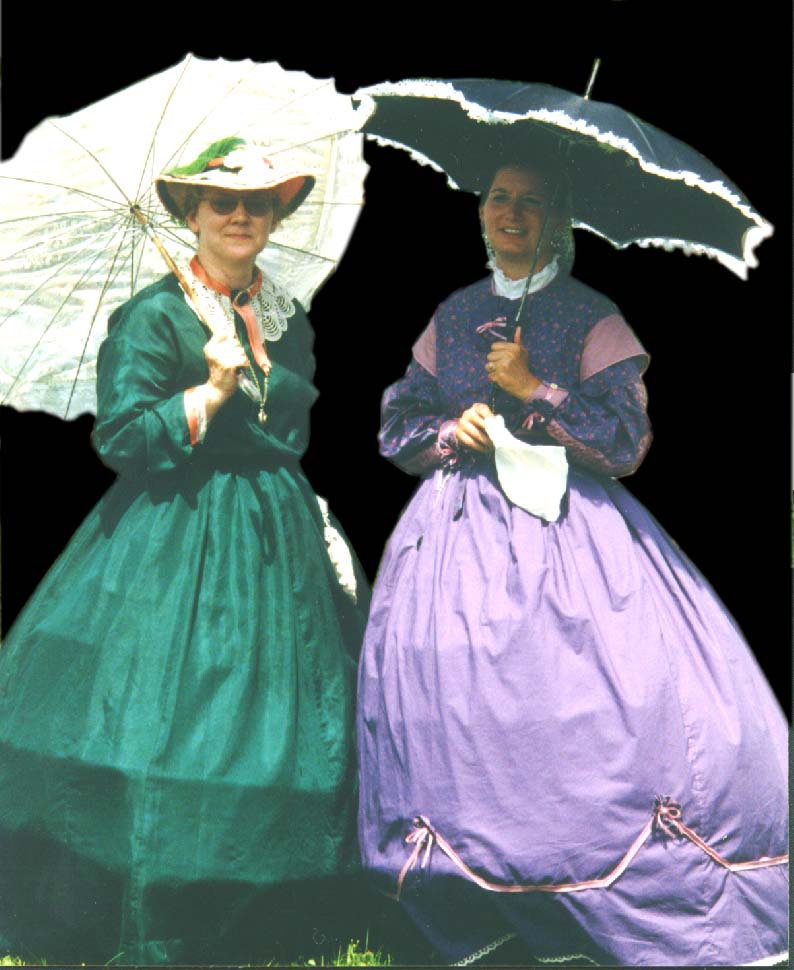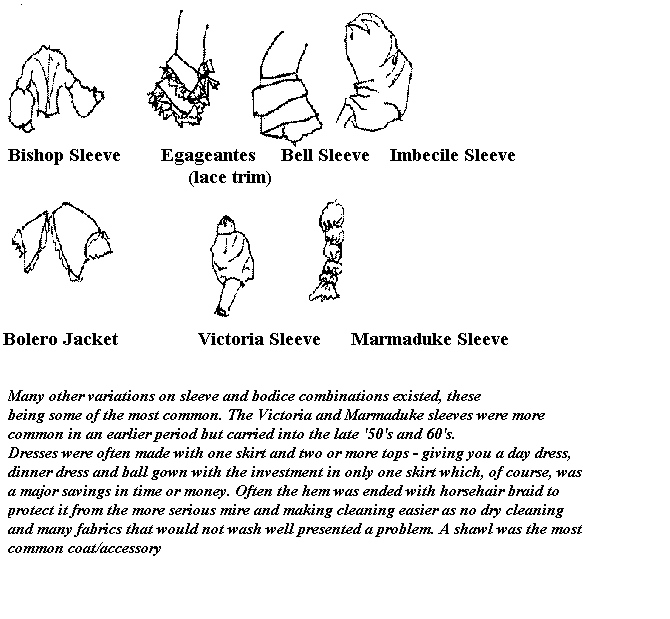|
Woman's Wear
Ladies at a Reenactment

The ladies shown here are wearing excellent
examples of the type of day dresses
you will most often find at Civil War events. In the
long run, what you wear relates directly to the persona you are portraying and the various
choices that would have been available to persons in the persona's social strata.
While this is the general look you will find, you have to think about who you are
and
what you are doing before you launch into a clothing campaign.
The material below offers some possibilities for women in various situations
and is
by no means definitive.
|
Princess dress with plain sleeves,
a very new fashion.
Generally colorful and, possibly, with a dot pattern finished by a white collar and
cuff. |
| Cameroon blouse with lots of tucking,
corsage bodice (very common - could be
hip or knee length in front, back or both, bodice front could also be waist length)
Blouses were often linen and likely to be red or white |
 |
 |
Ball gown in satin and lace combinations: could be white lace over
blue satin , black lace over yellow or pink, white with red or pea green. |
 |
Berber Spanish Jacket or Bolero (croched, knitted or
sewn, trimmed heavily with beads, cording or ribbon) and featuring epaulettes. Often
worn with a fan pleated blouse. |
|
 |
Factory girl 1850's - 1870's
No hoop, apron
and undersleeves for easier cleaning, straw hat
Would carry a metal lunch pail
From the 1830's on women worked in mills and other manufacture where a hoop and
excessive trim on their clothing would not only be silly but dangerous. During the
War, in particular, women worked in munitions plants as did young girls - to, generally,
the exclusion of boys as they smoked around the gunpowder.... |
 |
|
